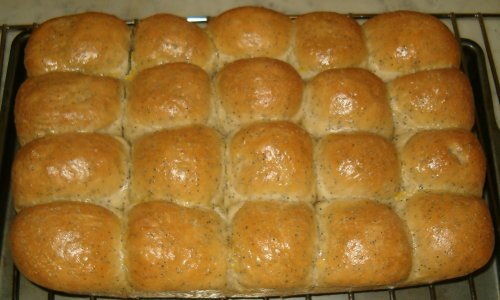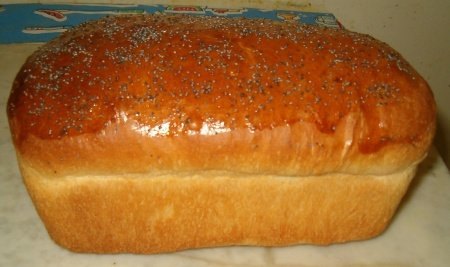subfuscpersona
Sous Chef
- Joined
- Aug 31, 2004
- Messages
- 561
I have become wedded to making bread using a "biga" which is essentially a starter using a pre-fermented bread dough made with flour, water and a small amount of yeast and then allowed to rise from anywhere from 8 to 24 hours. The "biga" is then used as part of the dough in the final recipe. It adds both flavor and keeping qualities.
A "biga" may be made in quantity and frozen for subsequent bread making. I make it in quantity, chill it overnight in the 'frig and then divide the dough into 6oz portions (a convenient amount for me) and store it, well-wrapped in plastic wrap, in the freezer. The day before I intend to make bread with the biga, I take a pkg and put it in the 'frig to defrost.
My recipe for "biga" comes from The Italian Baker by Carol Field. The "bakers pecentage" for this is
> flour (I use AP flour) - 100%
> water 74%
> yeast .25%
for those who would like more complete instructions, please go to
http://home.earthlink.net/~myjunketc/images/Bread/biga.jpg which gives her biga recipe complete with my comments in the margins.
A "biga" may be made in quantity and frozen for subsequent bread making. I make it in quantity, chill it overnight in the 'frig and then divide the dough into 6oz portions (a convenient amount for me) and store it, well-wrapped in plastic wrap, in the freezer. The day before I intend to make bread with the biga, I take a pkg and put it in the 'frig to defrost.
My recipe for "biga" comes from The Italian Baker by Carol Field. The "bakers pecentage" for this is
> flour (I use AP flour) - 100%
> water 74%
> yeast .25%
for those who would like more complete instructions, please go to
http://home.earthlink.net/~myjunketc/images/Bread/biga.jpg which gives her biga recipe complete with my comments in the margins.


